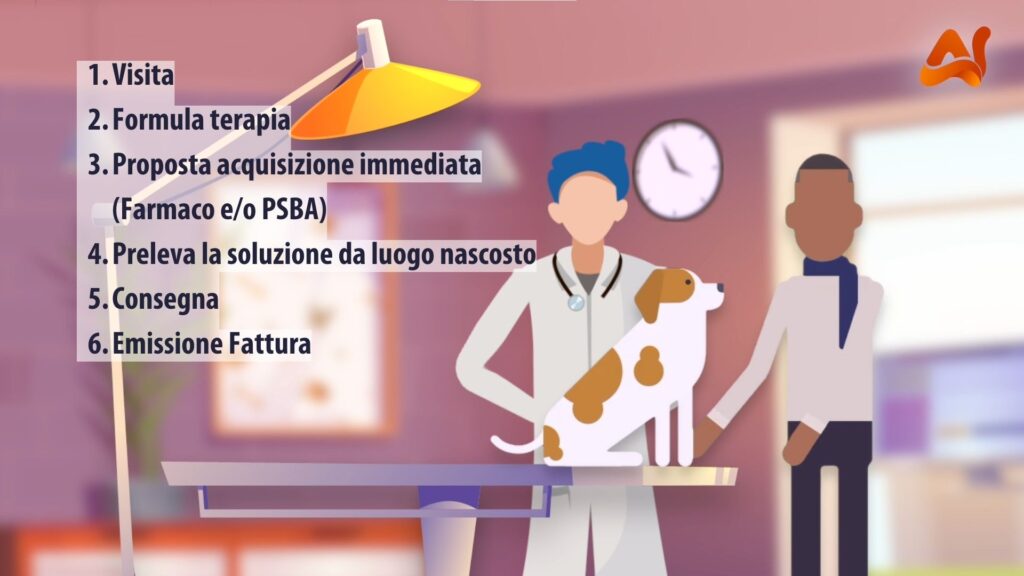
How to get more clients with SEO for veterinarians
What do you need SEO for if you are a veterinarian? Simple: attract traffic and turn it into paying customers! Learn how to optimize the structure and content of your website. … Read More

Sommario
Toggle[Important note: this article has been automatically translated from the original Italian language.]
Today everything is communication.
Thinking of doing professional work without equipping oneself with a solid communication foundation is like thinking of swimming against the current in a raging river.
Only a veterinarian who does not operate segregated in surgery away from the front office can do without it, nevertheless, without being NLP sharks, we are all required to observe a minimum “etiquette” to properly shape a substance (our professionalism) that is taken for granted.
The basic elements of communication-remember-there are five + one:
In addition we have the context, the environment, the perimeter within which communication takes place.
What is the object of our message? The product we offer? The drug we materially hand to the pet parent concerned about his “differently human” little son?
No.
The object is something abstract that materializes through us.
It is the solution to a contingent problem of the animal (and therefore the owner) that goes beyond the product and consubstantiates with the clinical service of which it is a natural continuation.
Theobject is not a product but an ancillary professional service that is as important as the medical act that precedes it.
We may not realize it, but we vets are perfect market makers.
How many productive categories of goods and services enjoy the privilege of being able to control supply and demand at the same time?
With the power to dispose of drugs and other PSBAs (Pet Health and Welfare Products other than medicines) we we are authorized a deliver – within the scope of professional service – the very products we prescribe jumping in with both feet the crucial moment around which the entire market economy revolves: the purchase decision.
We alone have the knowledge and expertise to make correct and appropriate treatment choices.
We alone can provide continuity of information at all stages of drug treatment, ensuring case-oriented counseling.
We alone can and should manage client compliance and watch for the emergence of adverse drug reactions.
Only we can make a judicious selection of products based on the prevailing case history in the area.
Only we can offer the convenience of having the necessary products at the same time as the clinical act.
Therefore, if as a broadcaster as to authority we are unbeatable, since the medium is the message (McLuhan docet), as direct interpreters and bearers of it, we find ourselves simultaneously playing at least three parts in the play.
We issue the message, we choose the language, we convey the message, we are its medium, and therefore WE are the message itself.
We actually occupy four of the five available boxes (we cannot be the receiver as well!).
We are in a position of absolute pre-power before our interlocutor because of the information asymmetry that earned Stiglitz, Akerlof and Spence the Nobel Prize in economics in 2001.
This is quite a responsibility but also a compelling challenge.
But just by starting from this superior position of ours, it is very easy to fall and even get hurt.
Indeed, all it takes is one misplaced word, one wrong expression, and the receiver perceives a message dissonant with our best intentions, reacting with a “no thanks!” that admits no reply.
We passed as shopkeepers and the customer punished us.
As we know, retailing in Veterinary Facilities moves within a well-defined boundary that it bears repeating once again.
The transfer of drugs and other PSBAs is allowed for animals under treatment, must be implemented by the veterinarian who performed the main service, cannot be advertised, and the display of products is prohibited. (Balduzzi Law)
The route is this:
Any action outside this pattern is to be considered improper and patently irregular.
We have said that theprovision of a product is not sale but should be configured as the provision of a service, and here we come back to the point, that is, we are proposing a solution -the best solution for us-to solve that problem.
We are offering our HELP.
Therefore, one must decode the meaning of selling.
Selling is not about being pushy, logorrheic, boring; our first task is to connect with the interlocutor and analyze his behavior.
To do this, one needs to develop an empathetic and friendly approach, helping the other party to open up and reveal what he or she feels is important.
Only in this way will it be possible to devise the right sales strategy, indeed, to help, in accordance with the mantra enunciated by David M. Scott in The New Rules of Sales and Service (2016).
Helping therefore, not selling. And we must be the first ones to convince ourselves of this new paradigm.
According to Scott, then, you perform better when you stop selling, that is, you purge the action of performance anxiety to make a real information about the product we’re offering, always remembering that you don’t have to push it because the customer places the utmost trust in us.
Therefore, our attitude must be to teach, to share our knowledge, and therefore the sine qua non is perfect knowledge of what we offer.
And, while this may be obvious for drugs, it is not at all obvious for supplements and other PSBAs.
So, if we pet corner, better a few products we know inside out and believe in, than many handled with pressapochism.
Repeat. The communication of parapharmaceuticals may give off a certain sufficiency compared to drugs.
Major mistake!
If we suggest a supplement or otological we do so with great conviction because it is the result of a thorough selection as we have already seen in the previous article (How to choose products to keep in the pet corner).
Everything we offer must have the ideal blue “VET GRADE” stamp certifying its quality, and this aspect must be clearly stated in the message.

Another element that must inspire our way of divestment is continuity.
Just as in throwing a bowling ball there is a fixed sequence of movements without adherence to which a decent throw cannot be executed, so the transfer of the drug or other PSBA – like the release of the bowling ball – must be the natural continuation of clinical performance, that is, of the main professional service of which the assignment is incidental.
In proposing a therapeutic solution-surgical vs. medical-as well as a drug or parapharmaceutical, nonverbal communication also often assumes decisive importance.
It is the so-called body language.
The rules of frank and persuasive communication can be summarized by the acronym SOLER:
In fact, they are all actions that denounce active and interested listening, express self-confidence, and corroborate what one wants to express in words.It is very disturbing to perceive a dissonance between verbal and nonverbal language, especially in a field as sensitive as health care.
A frequent objection is the customer’s supposed perception that we are spending too much and deciding his or her budget ourselves, playing it down.
But it is a loose-loose situation: he loses the veterinarian because he forecloses additional income, and he loses the owner (and his pet) because he does not enjoy a comprehensive, quality service.
In fact, there is an inescapable fourth cardinal point. FREEDOM.
Drawing from the conclusions of Thomas E. Catanzaro ‘s article “Your Future Veterinary Practice” (J Glob Econ 2016, 4:2)3 the golden rule is:
allow the customer to buy and not just justify/motivate the purchase, emphasizing FREEDOM to choose whether or not to take the opportunity we are offering.
It is essential to give the impression–true–of offering the dual option to the customer, and if we know how to do that–along with the other rules–we will see that very few will say no.
To recap the four elements that should inspire and guide our behavior when we make divestment are:
If we can act in tune with what we have laid out, it will be our own clients who will ask us to have therapy for their furry friend right away.

Related articles

What do you need SEO for if you are a veterinarian? Simple: attract traffic and turn it into paying customers! Learn how to optimize the structure and content of your website. … Read More

Let’s find out what a veterinary blog is really for, why people like it, and how it can bring you new clients. Here are 3 strategies you absolutely must know! … Read More

How long does it take you to arrange a surgery? How long does it take your staff to make a visit? How many drugs do you let expire?
If you can’t answer these questions, you are missing an important growth opportunity for your veterinary facility because you are not understanding where you can improve. … Read More

We are redirecting you to the cart to finalize the requested subscription change.
Lorem ipsum dolor sit amet, consectetur adipiscing elit. Ut elit tellus, luctus nec ullamcorper mattis, pulvinar dapibus leo. Lorem ipsum dolor sit amet, consectetur adipiscing elit. Ut elit tellus, luctus nec ullamcorper mattis, pulvinar dapibus leo.